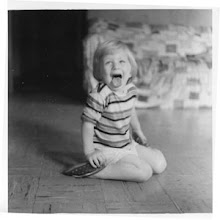
School’s almost out and summer’s around the corner. You’re about to hear that sad refrain. “Mom, I’m bored.”
Combat summer doldrums with “lawn games” passed down by our parents and grandparents.
Wii isn’t necessary. You don’t need a court, diamond or special facility to play. You don’t need special equipment, not even a ball.
Offer up some of these suggestions next time a small face appears at your bedroom door at 8 am with that “look.”
Tag too simple? Try Amoeba Tag:
- Select 2 people to join hands and be “it.”
- The pair chase others to catch them.
- First person caught links hands with the pair to form a chain.
- Add the next person to the chain to make 4.
- The 4 can stay together or break into 2 + 2.
- Each next pair caught can either join or break from the chain but must stay together.
- Play the game until no one is left off the chain.
- Gather at least 3 people; more is better.
- Designate a field of play.
- Select a “base” big enough for all to stand on or touch.
- Choose 1 to be the "ghost.
- The ghost hides while the rest remain on base.
- Chant “1 o’clock, 2 o’clock" and so forth,
- At midnight shout “I hope I don’t see a ghost tonight!”
- Leave the base to search for the ghost.
- The ghost must come out and tag others to become a ghost.
- Shout “Ghost in the graveyard” if a ghost is spotted.
- Run to base to remain “safe” from the ghost.
- Repeat until everyone is caught and becomes a ghost.
- Gather a group, the more the merrier.
- Stand in a circle facing inward.
- Grasp 2 other people’s hands.
- Try to untangle the “knot” without letting go.
- Be prepared to climb and crawl!
- Gather a group in an area big enough for movement.
- Select a leader.
- Jump, dance around, run and swing each other for about a minute.
- The leader yells freeze.
- Stop immediately and hold very still.
- First one to move is “out.”
- Play until no one is left.
Illustration by Donna Collinwood.






